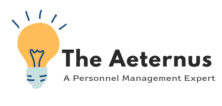30 core institutional competencies, ensuring candidates align with your organisation’s goals. (Research-driven )
Core institutional competencies are the essential skills, behaviors, and attributes that an organization prioritizes to achieve its mission, vision, and strategic goals. These competencies guide hiring, training, and performance management to ensure candidates and employees align with the organization’s objectives. Below is a list of 30 core institutional competencies, grouped into categories for clarity, that organizations might prioritize to ensure alignment with their goals. These competencies are adaptable to various industries but are designed to reflect universal traits that drive organizational success.
1. Strategic Thinking and Vision
- Strategic Planning: Ability to develop and implement long-term strategies aligned with organizational goals.
- Visionary Thinking: Capacity to anticipate future trends and align actions with the organization’s mission.
- Decision-Making: Making informed, timely decisions that support organizational objectives.
- Problem-Solving: Analyzing complex issues and developing effective, innovative solutions.
- Adaptability: Adjusting to changing priorities, environments, or strategies to stay aligned with goals.
2. Leadership and Influence
- Leadership: Inspiring and guiding teams to achieve collective goals while fostering a positive culture.
- Change Management: Leading and managing organizational change to ensure smooth transitions.
- Influence and Persuasion: Effectively communicating ideas to gain buy-in from stakeholders.
- Accountability: Taking responsibility for outcomes and ensuring alignment with organizational standards.
- Empowerment: Encouraging team members to take initiative and contribute to organizational success.
3. Collaboration and Teamwork
- Team Building: Fostering collaboration and trust within diverse teams to achieve shared goals.
- Interpersonal Skills: Building strong relationships with colleagues, clients, and stakeholders.
- Conflict Resolution: Managing and resolving conflicts constructively to maintain alignment.
- Cultural Competence: Working effectively in diverse environments and respecting inclusivity.
- Communication: Clearly conveying information and ideas to align teams with organizational objectives.
4. Operational Excellence
- Execution and Delivery: Consistently achieving results that meet or exceed organizational expectations.
- Time Management: Prioritizing tasks to meet deadlines and support strategic goals.
- Resource Management: Effectively utilizing resources (time, budget, personnel) to maximize impact.
- Process Improvement: Identifying and implementing ways to enhance efficiency and effectiveness.
- Attention to Detail: Ensuring accuracy and quality in work to uphold organizational standards.
5. Innovation and Creativity
- Innovation: Generating creative ideas to solve problems or improve processes.
- Entrepreneurial Mindset: Taking calculated risks to drive organizational growth and innovation.
- Continuous Learning: Seeking opportunities to develop new skills and knowledge aligned with goals.
- Adaptability to Technology: Leveraging new tools and technologies to enhance performance.
- Critical Thinking: Evaluating information objectively to make reasoned judgments.
6. Customer and Stakeholder Focus
- Customer Orientation: Prioritizing customer needs to deliver value and support organizational goals.
- Stakeholder Engagement: Building and maintaining strong relationships with key stakeholders.
- Empathy: Understanding and addressing the needs of customers, employees, and partners.
- Service Excellence: Delivering high-quality service to internal and external stakeholders.
- Ethical Conduct: Upholding integrity and ethical standards in all actions to build trust.
Ensuring Candidate Alignment with Organizational Goals
To ensure candidates align with these competencies and the organization’s goals:
- Define Competencies Clearly: Map these competencies to specific roles and the organization’s mission, vision, and values. For example, if innovation is a core goal, emphasize competencies like creativity and adaptability in job descriptions.
- Behavioral Interviewing: Use structured interviews with questions targeting these competencies (e.g., “Describe a time you solved a complex problem to achieve a team goal”).
- Assessment Tools: Implement tools like psychometric tests, situational judgment tests, or role-specific simulations to evaluate competencies like decision-making or teamwork.
- Cultural Fit Evaluation: Assess candidates’ alignment with the organization’s culture and values through questions about ethical conduct, collaboration, or adaptability.
- Onboarding and Training: Once hired, provide training to reinforce these competencies and align employees with strategic objectives.
- Performance Metrics: Use competency-based performance reviews to ensure ongoing alignment with organizational goals.
Notes :-
- The specific competencies prioritized depend on the organization’s industry, size, and strategic objectives. For example, a tech company might emphasize innovation and adaptability to technology, while a nonprofit might prioritize stakeholder engagement and empathy.



